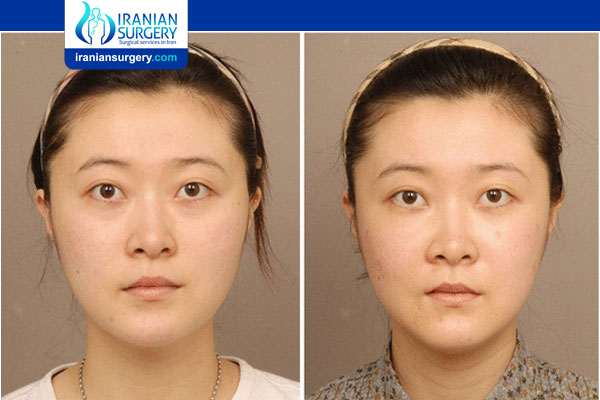Zygoma Reduction Surgery
Zygoma Reduction Surgery
A zygoma reduction is a cosmetic surgical procedure that reduces the size of the zygoma or the cheekbones. It is the more advanced version of traditional jaw and chin procedures and generally involves fracturing, trimming, and rotating the cheekbone to remove or correct bone protrusions that create a strong or harsh appearance.
The procedure is widely popular in East Asian countries, where strong zygoma features are prevalent. It has high satisfaction rating despite the existence of some surgical risks.
Who Should Undergo and Expected Results?
Patients who can benefit from a zygoma reduction are those who:
. Have excessively prominent front cheekbones
. Have wide cheekbones that make their face look too wide
. Have disproportionate or unbalanced facial contour
. Have a sunken area under the cheekbones, causing a hollow appearance
As for the expected results, the procedure can remove or correct bone protrusions making the facial line look sleeker, slimmer, and softer.
By reducing the size of the face in general, the procedure can also make a person’s facial features look more well-defined. For most patients, the results of the procedure make them look more attractive.
How is the Zygoma Reduction Procedure Performed?
A zygoma reduction is performed under general anesthesia and takes about three hours.
It requires patients to fast for at least 8 hours prior to the procedure. As part of the pre-surgery preparation, an x-ray examination is carried out to accurately determine the shape of the maxilla and mandibular bones as well as the locations of the nerves in the area.
Two incisions, one inside the mouth and the other inside the temporal area, are then made to access the cheekbone. The frontal and rear parts of the bone are then fractured to weakened the bone so it can be easily pushed inwards from the front and the side, and reduce its outward protrusion. If necessary, the surgeon may also cut off a portion of the zygoma bone’s body to make it L-shaped. The remaining zygoma bone is then rotated in a 3-dimensional manner.
The procedure can also be performed on the zygoma arch or the bow-shaped lateral aspect of the cheekbone. A protruding zygoma arch can make the face seem wider than it actually is. To reduce the arch, the surgery can be performed using the scalp approach, where the incision is made either above or in front of the ear. This gives the surgeon access to the arch and the body of the cheekbone making it easier to rotate the bone inwards.
In some cases, wherein both the zygoma body and the arch need to be adjusted, the surgery will combine both techniques.
The zygoma bone is then fixated with screws once placed in the desired position to prevent bone movements. Drains are placed to avoid fluid build-up in the surgical area and are removed the next day. The incisions are then closed with sutures.
After the procedure, patients are required to stay in the hospital overnight for monitoring purposes. Any stitches made during the procedure will be removed after approximately two weeks or when the surgical site has adequately healed.
During the first three days following the procedure, patients are required to wear a compression bandage over the surgical area at all times. For the next 1 to 2 weeks, they are only required to put it on when at home.
Possible Risks and Complications
Zygoma reduction, like other facial reduction procedures, does involve certain risks, including common surgical risks as well as risks unique to the procedure.
Common surgical risks include:
. Infection
. Bleeding
. Blood clot
. Bruising
. Swelling
. Injury to the surrounding muscles, bones, nerves, or blood vessels
. Allergic reactions to the anesthetics used
Risks unique to a zygoma reduction (or closely similar) procedure include:
. Changes or decrease in skin sensation over the surgical area, which may or may not be temporary
. Asymmetry between the two cheekbones
. Body contour irregularity
. Tightness in opening the mouth
. Bone disunion of the zygomatic arch
. Weakening of the zygomatic bone
. Zygomatic bone and arch defect or displacement after surgery
These risks may or may not require revision surgery.
Post-Operative Expectations
During the initial healing phase, patient may experience pain, numbness, bruises and swelling around the cheeks. Occasionally, patient may experience tightness during mouth opening. These symptoms are transient; usually last about 3-4 weeks. If there are any sutures on the side burn areas or in front of external ear canals, they are usually removed about 7-10 days after the surgery. Oral antibiotics and analgesics will be prescribed to reduce the risk of infection and postoperative pain respectively.
Since the incision is intraoral, patients are also taught on how to wash and clean their mouths to prevent an infection from developing.
Post-Operative Care
. Follow the postoperative instructions given carefully
. Head elevation especially when sleeping for 3-4 weeks
. Take the prescribed medications as instructed
. Compressive dressing around cheek for 3-5 days
. Wound care for any external wounds
. Regular mouth wash or gargle after every meal if there are any oral wounds
. Soft diet for 2-3 weeks
. Avoid strenuous physical activities for 3-4 weeks
About Iranian Surgery
Iranian surgery is an online medical tourism platform where you can find the best dentists and oral surgeons in Iran. The price of Dental Implants in Iran can vary according to each individual’s case and will be determined by an in-person assessment with the doctor.
For more information about the cost of Dental Implants in Iran and to schedule an appointment in advance, you can contact Iranian Surgery consultants via WhatsApp number 0098 901 929 0946. This service is completely free.
Source:


